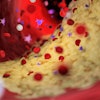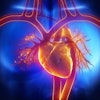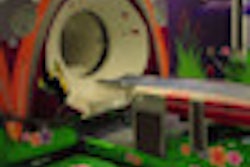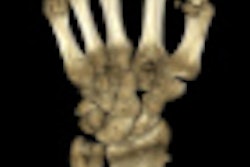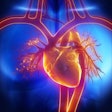High-dose N-acetylcysteine (NAC) does not prevent contrast-induced nephropathy (CIN) in high-risk patients undergoing coronary or vascular angiographic procedures, researchers reported at a late-breaking clinical trials presentation at the American Heart Association (AHA) meeting in Chicago last week.
The findings, from the Acetylcysteine for Contrast-Induced Nephropathy Trial (ACT), the largest randomized study on the topic to date, may bring to a halt the routine use of N-acetylcysteine in this setting, according to study discussant Brahmajee Nallamothu, MD, of the University of Michigan in Ann Arbor.
N-acetylcysteine, an antioxidant, has been used for about a decade to prevent kidney injury from contrast media used in coronary and vascular angiography, said study presenter Otavio Berwanger, MD, PhD, of the Hospital do Coração in São Paulo and chair of the ACT steering committee.
Nevertheless, there have been few quality trials showing the safety and efficacy of NAC, and those studies that have been performed have had conflicting results, he said.
The researchers randomly assigned 2,308 patients undergoing an angiographic procedure at 46 Brazilian hospitals to either 1,200 mg of NAC (given orally every 12 hours two days before and two days after the procedure) or matching placebo.
Patients had at least one of the following risk factors: age older than 70 years, chronic renal failure, diabetes, heart failure or left ventricular ejection fraction (LVEF) greater than 45%, or shock. The percentages of patients receiving high-, low-, and iso-osmolar contrast were 22%, 75%, and 3% in the NAC group and 22.9%, 74.3%, and 2.9% in the placebo group.
At 48 to 96 hours after angiography, there was "absolutely no difference" in the primary end point of contrast-induced nephropathy, and there was no difference in the secondary end point of serum creatinine elevation, Berwanger reported.
The study showed the following:
- A total of 12.7% of patients in both arms developed CIN, defined as an elevation of serum creatinine at least 25% greater than baseline (p = 0.97).
- A total of 3.9% of patients in the treatment arm and 3.8% of patients in the placebo arm experienced serum creatinine elevations of at least 0.5 mg/dL (p = 0.85).
- A total of 1.1% of patients in the treatment arm and 1.5% of patients in the placebo arm experienced a doubling of serum creatinine (p = 0.41).
Similarly, 30-day clinical end points, including mortality, cardiovascular mortality, and the need for dialysis, did not significantly differ between the placebo and N-acetylcysteine arms.
A subgroup analysis showed no benefit in any patient population, including patients stratified by age, the presence or absence of diabetes mellitus, gender, serum creatinine levels, or type of contrast used prior to angiography.
The overall rates of adverse events -- most commonly nausea, vomiting, angina, fatigue, or diarrhea -- were similar among the groups: 7.6% in the NAC arm versus 7.0% in the placebo arm (p = 0.61), as were the rates of serious adverse events (1.3% versus 2.2%, respectively; p = 0.09).
Berwanger noted that the results are consistent with a meta-analysis of previous small high-quality trials.
"Acetylcysteine does not reduce the short-term risk of CIN nor other clinically relevant outcomes at 30 days even among the higher-risk subgroups," he said. "These results may help to inform clinical practice and to update current guidelines."
Commenting on ACT, Nallamothu said that although NAC is not recommended in American College of Cardiology/AHA guidelines, it is used in approximately 10% of all patients undergoing angiography and in about 30% of patients with chronic renal insufficiency.
"The argument has always been made that 'we're not sure, but it's safe and cheap,' " Nallamothu said. "But acetylcysteine could increase length of stay and delay treatment. The cost of the drug is cheap, but implementing a system where patients get it beforehand can get expensive."
ACT shows that "at least at this point in time, there's no role for routine use of [acetylcysteine]," Nallamothu said.
Instead "it's really the simple things [for preventing CIN] that should be emphasized," he said. These include avoiding nephrotoxic agents in the periprocedural setting, hydrating adequately, and minimizing and justifying any contrast use, he said.
Brazil's Ministry of Health funded the study.
By Charlene Laino
AuntMinnie.com contributing writer
November 22, 2010
Related Reading
Contrast-induced nephropathy may be common after chest CT, October 1, 2010
Contrast-removal device may reduce CIN risk, September 13, 2010
ISCT speakers offer advice on managing CT contrast reactions, May 19, 2010
Iodixanol and iopamidol show similar nephrotoxicity, November 25, 2009
Sodium bicarbonate doesn't prevent CIN reactions, September 2, 2008
Copyright © 2010 AuntMinnie.com
